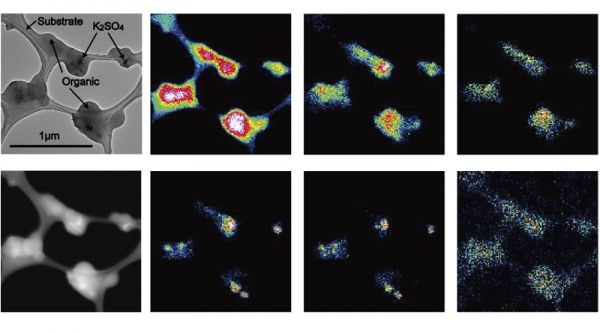Wildfires are widespread across the globe. They occur in places wherever plants are abundant — such as the raging fires currently burning in the Brazilian Amazon. Such biomass burning (BB) can be an environmental calamity.
The smoke from BB events produces large amounts of aerosol particles and gases. These emissions can cause major problems for visibility and health, as well as for local and global climate.
BB emissions are expected to increase in the future as a result of climate change. Tarballs, which are microscopic organic BB particles, are estimated to contribute up to 30% of BB aerosol mass. Because tarballs are a dominant, light-absorbing type of aerosol particle in BB smoke, understanding their influence on climate is crucial. But details of how they form and influence climate change have been unclear.
Senior researcher Kouji Adachi, currently working at the Meteorological Research Institute in Tsukuba, Japan, was a postdoctoral research associate from 2005 until 2011 with Professor Peter Buseck of Arizona State University’s School of Molecular Sciences and School of Earth and Space Exploration.
Read more at Arizona State University
Image: Transmission electron microscopy images showing change of shapes and element distributions of biomass burning aerosol samples followed by aging. CREDIT: Arizona State University


